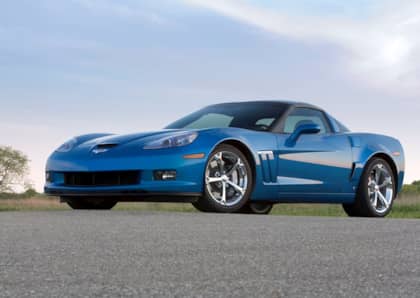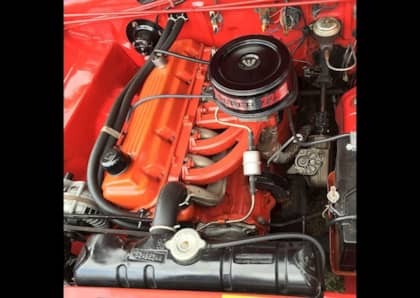Secrets of the 2005-2013 Chevrolet Corvette C6 Chassis: Why It Works So Well And What You Can Improve
Following the revolution in construction and design that was the C5 Corvette, Chevrolet found itself in a tough position while plotting out its successor. Any follow-up to the C5—which had introduced a new, hydroformed frame, the outstanding LS-series of third-generation small block engines, as well as numerous advanced production techniques—was going to be a tall order if it was to surpass what had been accomplished just less than a decade beforehand.

The 2005-2013 Chevrolet Corvette C6 ended up using much of the C5's architecture as a template, concentrating on improving on its foundation rather than wiping the slate clean. That being said, the C6 brought with it numerous upgrades that elevated the newest Corvette well above the C5 in terms of performance and finesse, with both the Z06 and the ZR1 models representing a quantum leap forward in materials use in a bid to keep the most powerful Chevrolet street cars ever built under control.
Smaller And Stiffer
Peel back the sheet-molded compound body panels on the C6 Corvette (although, for the first time, the 'Vette featured steel front fenders), and you'd be looking at a very familiar structure as compared to the version of the sports car that came before it. The same 'backbone' style hydroformed steel frame served to hold the vehicle together, only this time it underpinned a body that was shorter (5.1 inches) despite a 1.2 inch increase in wheelbase.

Going to a shorter frame didn't just reduce overhang at the front and rear of the car, but it also improved stiffness. The standard Corvette also saw more of a mixture of steel and aluminum in its chassis, with steel frame braces balanced out by aluminum crash safety structures, interior beams, and underbody panels (including the move to extruded rather than cast components to further keep the weight down). The overall goal was to improve the torsional rigidity of the C6 without pushing its weight past that of the C5.
Z06 Ups The Ante
In terms of individual suspension components, the C6 did go for a fresh approach, redesigning every significant piece of the Corvette's steering, shock absorbers, springs, swaybars, and all connecting hardware while remaining true to the basic concepts introduced by the C5. This was done in part to service the decision to make the car lighter, but also to smooth out the Corvette's ride.

As with the C5, there were several different flavors of handling prowess available with the C6, divided into options packages and trim levels. Of these, two stood out: the Z06 and the ZR1.

The C6 edition of the Z06 went well beyond the tweaks made to the C5 Z06, transferring entirely to an all-aluminum frame that sliced 110 lbs from the car's curb weight (nearly 30 percent lighter than the C5 frame) while checking in at half again as stiff. On top of that, the C6 Chevrolet Corvette Z06 employed magnesium and carbon fiber in its body construction and several aspects of its chassis, further reducing mass while improving rigidity. It also came standard with Magnetic Ride Control, an adaptive damper setup that had grown more advanced (and was now regularly licensed out to sports car luminaries such as Ferrari for use in its own models).

The aluminum-intensive package helped the Z06 better manage the 505 hp available from its 7.0L LS7 V8 engine, which also churned out 505 lb-ft of torque. It was also used as the basis for the overwhelming ZR1 'Blue Devil' edition of the C6 that appeared in 2009, which featured an absurd 620 hp and 595 lb-ft of torque from its supercharged LS9 engine. Outfitted with massive 285/30ZR19 and 335/25ZR20 tires, the ZR1's Magnetic Ride Control was tuned to better handle its ultra-wide rubber as well as maintain the rear axle's contact with the asphalt during hard acceleration.

Magnetic Ride Control was an option on the standard C6 Corvette, alongside the Z51 package which provided uprated sway bars, shocks, and springs to go with its various other track-ready vehicle enhancements. By 2010, the Z51 had been replaced by the similar Grand Sport model, which pulled further from the Z06 parts bin but retained the steel base model frame.
Strong Core Package
As with the C5 before it, the easiest path to improving the performance of the C6 Corvette is to borrow parts the next-step-up in terms of trim or package. Z51, Grand Sport, Z06, and to a certain extend ZR1 components can be interchanged on the Chevrolet's platform, which means higher rate shocks and springs, thicker swaybars, and even aluminum and magnesium chassis parts are available for the taking without having to leave the GM ecosphere.

There are also some 'free' modifications that can be made to almost any version of the C6, including adjusting ride height by way of its leaf springs to easily lower the car, as well as a performance-oriented alignment for the wheels and tires.

Given that so much of the C6 suspension is shared with the C5, at least conceptually, most of the same tips and upgrades apply. It's possible to replace the transverse leaf springs with a coilover setup or stiffer aftermarket leafs, each of which can be paired with adjustable shock absorbers, which provide a step up in control on non-MagRide cars. Urethane bushings are also available, and are a good idea for anyone considering taking one of these Corvettes to the track, as the decades and miles have likely not been kind to the stock rubber units. Speaking of rubber, updating/replacing old tires with max performance versions like Nitto NT05/NT05R tires will also improve traction and handling.

Remember: modifying a vehicle's suspension needs to be approached systematically, as changes in one area will have an effect elsewhere, and not all aftermarket packages will play nicely with each other (or are designed for the same alignment settings/tire sizes/spring rates). The C6 makes a fantastic out-of-the-box sports car that can be transformed into a potent track weapon with the right approach to tweaking its chassis.











